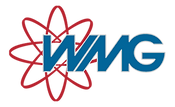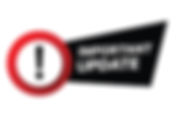Search Results
136 results found
- Important Update | WMG, Inc.
< Back Important Update Mar 31, 2023 Regarding the NRC's Uniform Low-Level Waste Manifest... Many have noticed that the current US NRC Uniform Low-Level Waste Manifest (UWM) included several new additions when Revision 3 was issued in June of 2021. One of these new additions was the inclusion of an OMB number and expiration date. The current UWM had an expiration date of 1/31/2023, which led many sites to question whether it is acceptable to continue using an expired manifest. As a result of a WMG discussion with the NRC on February 13th 2023, to address the expiration date of the UWM, the NRC has updated their website to include guidance that "use of the NRC UWM forms with the 1/31/2023 expiration date and the form date of 06-2021 is acceptable in the interim". Further, the NRC informed WMG that the expected OMB approval of the UWM will not result in any material changes to the manifest with the exception of a change of the expiration date and/or form date. The NRC has said that going forward, the NRC form library will be updated every 30 days, with a new expiration date until OMB approval has been issued. In the interim, it is not necessary to revise your waste manifests, nor is it necessary to remediate the waste manifest by striking the expiration date. The updated clarification is in bold text at the top of the NRC Low-Level Waste Disposal page, which can be found here: Uniform Waste Manifest | NRC.gov Previous Next
- Radioactive Material & Waste Shipping Fundamentals | WMG, Inc.
Radioactive Material & Waste Shipping Fundamentals Course Length: 4 Days Course Code: WMG-RC-150 Prerequisites: Basic Math Skills Satisfies: 49CFR172 Subpart H, 10CFR71.5 & NRC IE 79-19 Audience Profile: Professionals involved in radioactive shipping support roles, including HP, RP Tech, Ops, and Handlers. Training is essential for new radioactive shippers as well as a good overview refresher. < Back Course Description: The RC-150 Radioactive Material & Waste Shipping course is a beginning and fundamental level course designed to provide a comprehensive understanding of the regulatory landscape surrounding hazardous material transportation, with a specific focus on the Department of Transportation (DOT), Nuclear Regulatory Commission (NRC), and Environmental Protection Agency (EPA) guidelines. Participants will delve into the intricacies of compliance and safety protocols for shipping radioactive materials in the U.S.A., emphasizing key regulations outlined in 10, 40, and 49 CFR. Through a combination of theoretical knowledge and practical application, participants will gain the skills needed to navigate the regulatory framework confidently. Skills Gained: • Demonstrate effective understanding and application of DOT, NRC & EPA regulations governing HazMat offeror pre-transportation functions for radioactive class 7 materials by highway. • Identify and adhere to regulatory requirements for safe and secure transport of radioactive materials. • Navigate complexities related to radioactive materials, waste, and compliance protocols.
- Mixed Waste Shipping Fundamentals | WMG, Inc.
Mixed Waste Shipping Fundamentals Course Length: 5 Days Course Code: WMG-RC-500 Prerequisites: RC-150, RC-153 or equivalent Satisfies: 49CFR172 Subpart H, 10CFR71.5 & NRC IE 79-19 Audience Profile: Designed for radioactive material, hazardous material, and hazardous waste shippers and shipping support personnel < Back Course Description: This Mixed Waste shipping course is a beginning and fundamental level course designed to provide a comprehensive understanding of the regulatory landscape surrounding radioactive material, hazardous material, and hazardous waste transportation, with a specific focus on the Department of Transportation (DOT), Nuclear Regulatory Commission (NRC), and Environmental Protection Agency (EPA) regulations. Participants will delve into the intricacies of compliance and safety protocols for shipping mixed waste in the U.S.A., emphasizing key regulations outlined in 10, 40 & 49 CFR. Through a combination of theoretical knowledge and practical application, participants will gain the skills needed to navigate these regulatory frameworks confidently. Skills Gained: Demonstrate effective understanding and application of DOT, NRC & EPA regulations governing hazardous material and hazardous waste offeror pre-transportation and shipping functions for mixed waste by highway. Identify and adhere to regulatory requirements for safe and secure transport of mixed waste. Navigate complexities related to radioactive material, hazardous material, and hazardous waste transportation compliance protocols.
- WMG Receives John M. Palms Outstanding Innovation Award for REACh™ | WMG, Inc.
< Back WMG Receives John M. Palms Outstanding Innovation Award for REACh™ Sep 29, 2025 We're honored to be recognized for our contributions to safer, more accurate radwaste operations. We’re proud to share that WMG, Inc., in partnership with Fermi-1, has been awarded the 2024 John M. Palms Outstanding Innovation Award by the ISOE North American Technical Center. This honor recognizes the groundbreaking development of a new field method for characterizing radioactive materials, enabling direct measurement of gamma dose rates and nuclide activity in-situ for more accurate results. Importantly, the method features seamless integration into RADMAN™ to generate waste and material manifests at Fermi-1. This achievement not only showcases the power of RADMAN™ but also highlights the forward-thinking innovation that drives WMG’s software suite, including REACh™, as we continue to lead the industry with tools that support compliance, accuracy, and efficiency. Previous Next
- WMG Liners | WMG, Inc.
< Back WMG Liners Brochure WMG Liners: Setting the Standard in Metal Liner Solutions - From Standard to Custom, Elevate Your Project with Precision Design and Unparalleled Versatility. Download Previous Next
- Entry into the D&D Market | WMG, Inc.
< Back 1991 Entry into the D&D Market WMG ventures into the decontamination and decommissioning (D&D) market, securing a significant contract at Yankee Rowe based on prior success with activation analysis contracts for the government. Subsequently, WMG successfully fulfills major D&D contracts at Saxton, Trojan, Shoreham, San Onofre, Oyster Creek, Big Rock Point, and Yankee Maine and Connecticut.
- RADMAN IMS | WMG, Inc.
Inventory Management System The RADMAN™ Inventory Management System (IMS) is a new, intuitive tool designed to seamlessly integrate with RADMAN™. It provides hierarchical tracking for a wide range of items, containers, tanks, rooms, and specific locations that store radioactive waste, materials, equipment, or other trackable assets. Main Features Instant Material Location: Quickly locate any item or material within the facility with a simple click, significantly reducing search times and improving workflow efficiency. Threshold Management : Control the internal movement of materials using customizable, site-specific thresholds. Comprehensive Reporting: Generate detailed, configurable reports that provide insight into item movement history, location-specific manifests, and threshold summaries, facilitating thorough audits and allow for well-informed budget planning for stored assets vs wastes. Efficient Packaging and Exporting: All of the information in RADMAN™ IMS is shared with RADMAN™ making data needs for characterization and shipment of wastes/materials readily available and removes redundant data entry and tracking. Advanced Tracking Technologies: Improve safety and minimize human error through the integration of modern tracking solutions such as barcodes and QR codes.
- Transfer of Leadership | WMG, Inc.
< Back 2003 Transfer of Leadership Kevin Tuite takes over as President and CEO.
- Training Resources | WMG, Inc.
Training Resources Welcome to the WMG library! Listed below are various resources regarding regulations and best practices issued by the corresponding agencies. These serve as guides to offer knowledge and practical guidance to ensure compliance and excellence in navigating the landscape of regulatory requirements and industry standards.
- ProShipper™ | WMG, Inc.
< Back ProShipper™ Brochure WMG is your gateway to logistics expertise for radioactive materials and radioactive waste management. Our Pro-Shippers™ are experts who enhance the efficiency and quality of your radioactive material/waste management with hands-on experience that seamlessly integrates with your operations, providing supplemental on-site staff support. Download Previous Next
- Employee Spotlight: Michael Kershman | WMG, Inc.
< Back Employee Spotlight: Michael Kershman Oct 2, 2023 Come meet one of our team members! Michael Kershman is WMG's new Software Technical Manager, joining us in August 2023. Michael is a Navy veteran with over 25 years of experience as a Health Physicist, including 12 years of radioactive and mixed waste shipping experience. As Software Technical Manager, some of Michael's duties and responsibilities include: Testing, maintenance, and implementation of software. Providing technical direction for development, design and systems integration. Collaboration with the programming team to incorporate user feedback into WMG software programs, ensuring high-quality user experiences. In his free time, Michael enjoys spending time with his son, sharing common activities such as scuba diving, bike riding, and skeet shooting. In Michael's own words: "Variety is the key to life". "The work itself is interesting, helping to develop industry leading software that strives to make it easier for the client to do their job is exciting. But more than that, working with a group of people that values each other’s contributions and cares enough to hear everyone’s voice on issues makes it more like a family project than a job." – Michael Kershman, on working at WMG. Previous Next
- Payments | WMG, Inc.
Explore our Payments webpage for seamless and secure transaction solutions. Trust us for convenient, efficient, and secure payment processing. Enter Payment First name Last name Email Reason for Payment Payment Notes Enter the amount $ Pay







